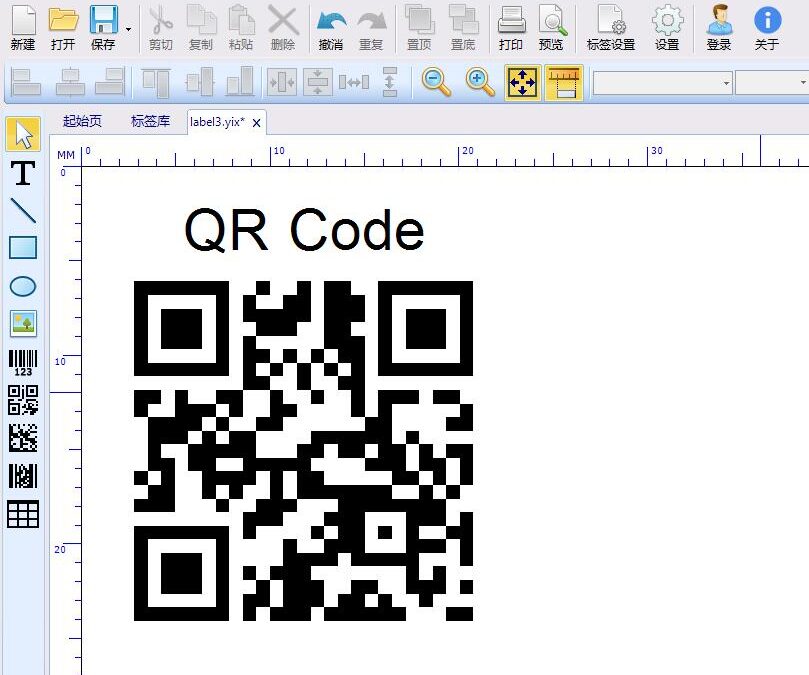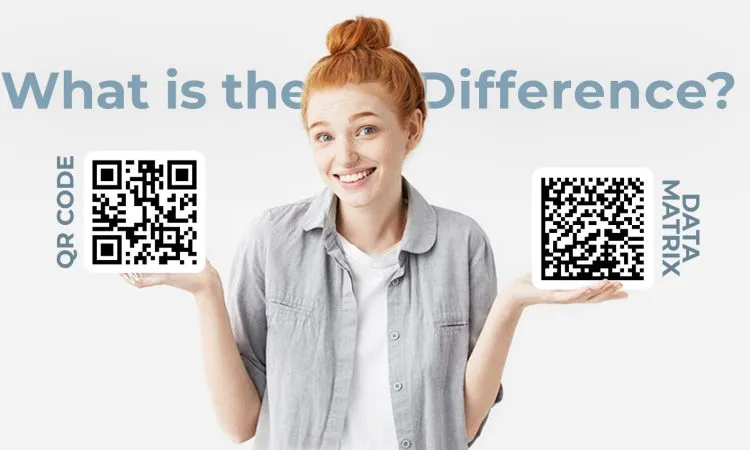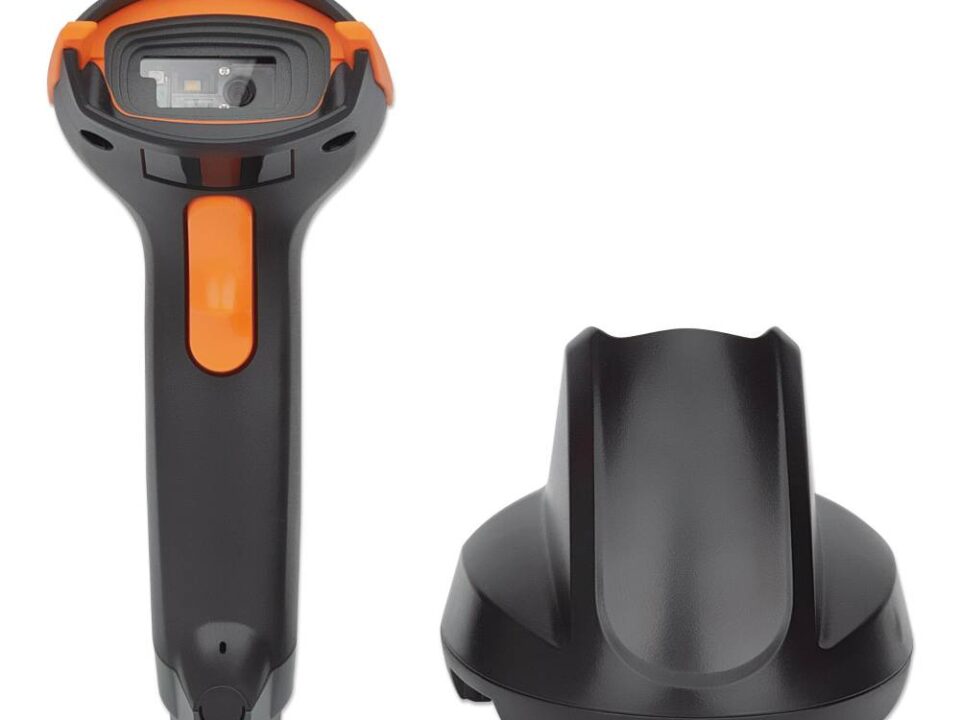A two-dimensional code is actually a two-color rectangular matrix distributed on a plane (i.e. two-dimensional direction) with specific geometric figures according to a certain rule. The new generation of barcode technology that records data symbol information looks like a two-color square. maze.
It is different from common barcodes (ie one-dimensional codes). In terms of information expression, the two-dimensional code can express different information in both horizontal and vertical directions at the same time, so the amount of information that can be stored is dozens of times that of a barcode, and it can integrate images, sounds, text and other information;
In terms of function, the QR code not only has the basic recognition function, but also can display more detailed product content. It is not only easy to read, but also saves paper.
What is a QR code?
Quick Response Code (QR Code) is a version of two-dimensional barcodes, which can transmit various information almost instantly by scanning mobile devices.
The code can store up to 7089 numbers or 4296 characters, including sentence reading and special characters. It can also encode words and phrases, such as Internet addresses. One thing to keep in mind, especially when it comes to the aesthetics of designing static QR codes is that the more data is added, the more the size increases, and the more complex its structure becomes.
Even in the case of damage, the structure data key of the QR code will be duplicated. It is precisely because of these redundancies that up to 30% of the code structure is damaged without affecting its readability on the scanner.
QR code
| Character Set | Length | Check Digit | Size, Module Width X, Print Ratio |
|---|---|---|---|
| ASCII | 4296 alpha, 7089 numeric characters | Error correction | |
| Applications | Used for mobile applications and encoding large amount of data characters; developed 1994 by DENSO. | ||
| Notes | ISO/IEC 18004:2015; supports also Kana, binary, and Kanji characters; please find more information on our QR Code page. | ||
Micro QR Code
| Character Set | Length | Check Digit | Size, Module Width X, Print Ratio |
|---|---|---|---|
| ASCII | 21 alpha, 35 numeric, 15 byte or 9 Kanji characters | Error correction | 4 different symbol sizes (M1-M4) |
| Applications | The Micro QR-Code was developed for fast readability by DENSO. | ||
| Notes | Small variant of QR-Code with a reduced number of overhead modules and a restricted range of sizes. The maximum amount of data is 21 alphanumeric, 35 numeric, 15 byte or 9 Kanji characters, in conjunction with the lowest error correction level. | ||
QR code: a brief history
In 1994, DENSO WAVE, a Japanese subsidiary, needed a better, faster, and stronger barcode technology to process more characters and help them track vehicles and parts. Masahiro Hara and his two-person team were responsible for developing the QR code as we now know it.
For Harahiro and his team, some of the most challenging problems are finding a way to make the 2d code read as fast as possible, while preventing errors once the shape of the position detection mode is added Recognition. It must be unique, which means that the development team spent most of the year investigating the ratio of white and black areas, and then reduced them to patterns on printed materials. How is the result? They think the ideal ratio is 1:1:3:1:1.
By identifying this number, they can determine the black and white area in the position detection mode, which allows the code to be detected regardless of the scanning angle. In short, this unique ratio just means that you can scan it from top to bottom and left to right.
Although the original target area of QR code is manufacturing, as the use of smartphones increases, and it is still unpatented, this means that it has become an open source technology that anyone and anyone can use.
You can now find fashionable QR codes to provide a lot of information and redefine printing to digital marketing scenarios.
We know that you are eager to gain more knowledge, so if you want to learn about different types of codes, such as Micro QR Code, please visit our blog.
How to scan the QR code?
Nowadays, new versions of smart phones have an integrated QR code reader in the phone camera, such as mainstream Android systems such as Huawei and Xiaomi, Samsung’s Bixby Vision and Apple’s iOS 11 operating system. But don’t worry, if your mobile phone does not have a QR code reader, there are many options in major app stores, you can download and use it with just a click of a button. We have prepared a guide for Android and iOS to make it easier.
Analyze the QR code
It’s the 90s, and you just popped your video tape, leaving the square TV screen in a state of static white noise. Visually, this is what some people think of when they see a QR code. A complex matrix of black and white squares. Although it looks like a pixelated image, each of these squares is actually a code that marks the ability to serve a larger function in information sharing.
Location detection mark
Located in the three corners of each code, it allows the scanner to accurately identify the code and read the code at high speed, while pointing out the direction of code printing. They essentially help to quickly identify the presence of a QR code in an image and its direction.
Alignment mark
Less than the position detection marks, they help to straighten out the QR code drawn on a curved surface. Moreover, the more information the Code stores, the larger it is, and the more alignment modes it needs.
Timekeeping Mode
Alternating the two-dimensional code on the black and white module with the idea of accurately helping to configure the data grid. Using these rows, the scanner determines how big the data matrix is.
Version information
There are currently 40 different QR code versions, and these tags specify the one being used. The most common are version 1 to version 7.
Format information
The format mode contains information about error tolerance and data mask mode, and makes code scanning easier.
Data and error correction key
The inherent error correction mechanism in the QR code structure is that all your data is contained in it, while sharing space with the error correction block, allowing up to 30% of the QR code to be damaged.
Quiet area
This is like the importance of whitespace in design, it provides structure and improves comprehension. For whom, or what might you ask? Scan program. In order to distinguish the QR code from the surrounding environment, a quiet zone is essential.
What are static and dynamic QR codes?
Static QR code
The information contained in a static QR code is fixed and cannot be edited once the code has been generated. They are great for personal use and QR Code API. The QR Code API is the key to creating mass codes for employee ID cards, event badges, technical product documents, etc.
On the other hand, due to their fixed nature, they are not suitable for commercial or marketing activities, because static codes do not track metrics or allow creation after editing.
Application type of static QR code
WiFi wireless network
Make it easier for your friends and family to connect to your home network, or allow guests to enter your company WiFi by simply scanning this QR code
Bitcoin Bitcoin
By converting your Bitcoin or other encrypted address into a QR code, you can successfully complete your encrypted currency transaction, and you can choose to add a label to indicate the recipient and the requested amount
QR code payment
Two-dimensional code payment is a new generation of wireless payment solutions based on an account system. Under this payment scheme, merchants can compile transaction information such as account numbers and commodity prices into a two-dimensional code, and print it on various newspapers, magazines, advertisements, books and other media.
Plain text
Display up to 300 characters, and have the opportunity to provide your customers with any information in any language, regardless of Internet access
Business card
If you have already printed your business card, simply scan the business card code, and you can instantly share your email address, phone number, URL, and company details
You can provide customers with a convenient way to contact you with this code. A pre-filled information can be sent with a simple button, and customers can choose to edit before sending
Dynamic QR code
On the other hand, dynamic QR codes allow you to update, edit and change the type of QR codes no matter how many times you need them, which makes them most suitable for commercial and marketing purposes.
As we mentioned in the previous explanation of the basic knowledge of QR codes, the more information entered in a static QR code, the larger and more complex its structure becomes. However, for dynamic code, the content presented to the scanner is not directly included in the code, but a short redirect URL is assigned to it. This means that the code is still small and easier to integrate into your printed materials and packaging design.
Capturing and measuring advertising statistics every time a dynamic code is scanned is probably the best feature for optimizing marketing activities. You can visit when, where and what device to scan. You can add things like media, start and end dates, print runs, and you can even reset scan and download results as a CSV report.
Application type of dynamic QR code
App Store
You can link to multiple application stores with just one scan. Regardless of the scanner’s cellular operating system, it allows your mobile applications to be more effectively promoted and downloaded to a wider range of target users.
Digital magazines, brochures, e-books, with this code, you can improve your marketing at the same time, save printing costs, and provide customers with opportunities to save and share files from their palms
Social media
Share all your social media platforms on the mobile-friendly landing page. Whether it’s Twitter, Snapchat, YouTube or Instagram, your audience can choose to follow your platform
Coupon
Using this code can eliminate the hassle of customers buying coupons. With just one scan, they can save your promotional information on their mobile device, share it on social media or email, and easily redeem it at your nearest location or online store
Website page
Let your audience know you better at their convenience. If you don’t have a website, then this QR code is a perfect, mobile-friendly platform to let customers know your mission statement, how to contact you, your actual store location, business hours, and how to find you with Google Maps< /p>
Common usage of QR code
Promotion app download
The mobile app increased downloads by 14% by advertising on digital signage and using QR codes. By linking to multiple app stores, the QR code of the app store allows customers to easily download your app by linking to the Apple App Store, Google App Store or Amazon App Store. From the phone-friendly page, you can also include a link to a website with a video trailer or a personalized button.
Redeeming coupons is easy
It’s a holiday, and you have a big promotion to promote. The QR code coupon is perfect to help you optimize your coupon activity, allowing customers to just scan and immediately save or use your coupon. They can send it to themselves via email, or share it with friends via social media or anywhere on the Internet. By depositing the coupon into the mobile phone, customers will never forget to bring the coupon to redeem.
Get more followers
If you want to make sure that people are aware of your latest news on their favorite platform, then add a social media QR code to your storefront window or flyer. With just one scan, they can directly connect to your Sina Weibo or WeChat Moments.
Let your customers speak their own voice
There is usually no easy way to get customer feedback. Even if they give feedback, companies often leave a lot of forms to organize and organize. But this is no longer necessary. With the feedback QR code, you now have a convenient way to collect customer reviews and information directly to the email address of your choice. Divided into categories and subcategories, you can easily update the information based on the product or service at any time that you want to hear the most.
Event marketing
Using the event QR code, you can help your event marketing efforts to successfully generate more participants. By providing additional information, you can ensure that potential customers can save your event date on their favorite mobile calendar, link to Google Maps for directions, and register or purchase tickets in advance to simplify planning.




